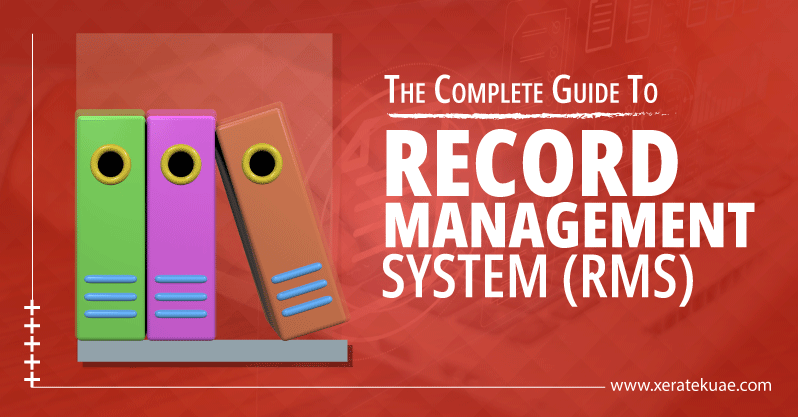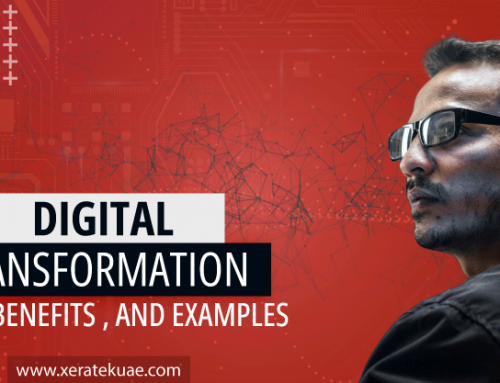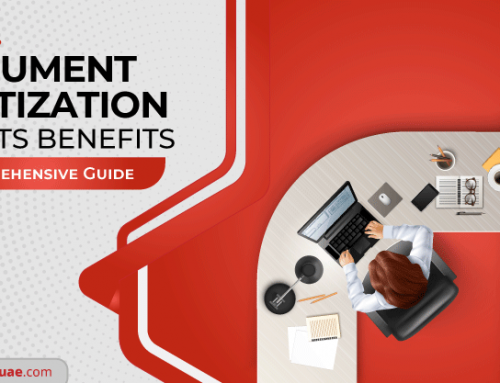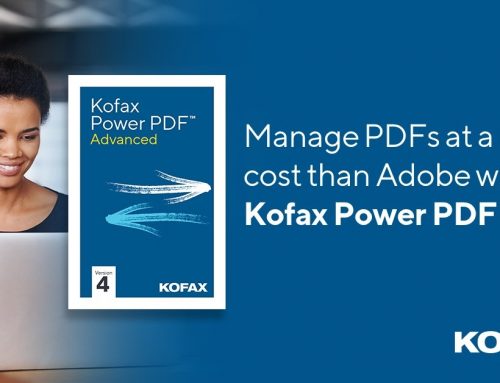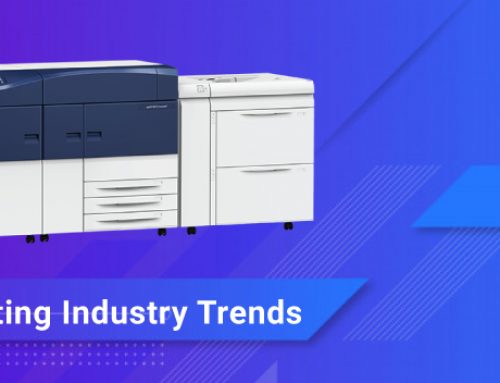Businesses always look for better and more reliable document storage solutions. In the past, keeping the records in one place with so many documents was quite challenging. So, document storage is an integral part of the record management process. A record management system reduces wasted space and enhances operational productivity, making it easier to store documents in different forms that are organized and can be retrieved easily. However, it increases the importance of having a record management system (RMS). This article covers the complete guide to the record management system.
Whether small or large companies, everyone needs to keep their records that are perfectly organized and stored securely for a certain time. For instance, if you need to store your credit card and bank statements in a safe location for a few years, you must have a record management system. It applies to different documents as well. You must keep it for a year at least, whether it’s investment statements, canceled cheques, or even pay stubs.
Keeping a record of important documents is crucial. What if your important documents are damaged or lost? Imagine your computer is hacked, and all your documents and statements are lost. Most businesses face such an issue when the office catches fire and burns everything. One solution is keeping copies of the documents in multiple locations, which requires more budget and space. So, is the record management system the best solution?
Let’s find this out.
What is a Record Management System (RMS)?
RMS is the management of records for a company throughout the records life cycle. It is more than just the storage of documents.
The record management system includes activities such as systematic control of record creation, efficient maintenance, and deletion of records. It is considered a primary component of increasing the organization’s operational efficiency and adding more value to its information assets. It is indeed the best and complete solution that follows a strictly defined policy for creating, storing, and deleting digital and hard information assets.
RMS usually involves record management software, but it is more than just document scanning and software. Fundamentally, a record management system should have a comprehensive inventory. It also helps in identifying and enforcing retention plans for the records. With RMS, it becomes easier for organizations to manage the safe destruction of documents. You will get clearly defined procedures for paper and digital information or records.
The most prominent feature that forces people to opt for a record management system is the transfer of paper records to digital formats through document scanning. It also helps you maintain a transparent document audit trail. Throughout the lifecycle, your records will be safe and intact.
What Are the Types of Records Management Systems?
A record management system or RMS ensures that all files are always available whenever you need them. Moreover, it improves the organization’s workflow and productivity, which takes business to new heights.
Employees’ productivity increases when they can quickly retrieve data, process it, identify the records’ owners, and easily remove data redundancy.
Two main types of record management systems are explained extensively below.
1) Cloud-based Record Management System
You can save all your documents in one place with a cloud-based record management system. This type of record management system gives a digital storage solution that acts as a warehouse for all the documents within the company. It allows you to access them from anywhere and anytime. So, this system is specifically useful for organizations with remote working environments and has teams across borders working from different parts of the world.
Moreover, cloud record management systems keep documents and files safe and eliminate the need to perform regular backups using additional tools. Also, it allows users to assign particular files to the team members while sending real-time notifications instead of just sending emails back and forth. In this RMS type, the data is stored on the host server, making it stronger against cyber-attacks.
2) Enterprise-Record Management System
Many big companies generally choose enterprise record management systems because they offer advanced capabilities to efficiently store, organize and process large amounts of data or information. You will typically find managing digital and physical records convenient with enterprise RMS. Moreover, you can track the status and location of all files and transfer data from the traditional system to the updated software.
However, it is suggested to opt for a system that provides secure user access, real-time indexing of data, and the best data destruction management mechanism. An effective enterprise record management system enables you to place records on hold, carry out full-text searches, and efficiently import digital and physical records from any source in any suitable format. All these features are a great addition to your business operations and can help you better decide to achieve objectives.
This type of record management is further categorized into different systems, such as content management systems (CMS), document management systems, and digital imaging systems. However, you need to understand your objective before choosing your business.
How Does a Record Management System Work?
The record management system process is pretty simple and efficient. There are five phases of the working of the record management system.
i) Create and Receive Records
The first step is the creation of records internally or receiving the records from an external source. However, the records you receive can be of different formats, such as digital forms, paper documents, reports, emails, and others. So, the first that goes into RMS is the creation of records.
ii) Modification of Data
After receiving or creating the records, the next step is storing the frequently used data or reports internally for quick retrieval. However, other data or reports are saved off-site and are available whenever you need them. It is a crucial process.
iii) Protection and Maintenance
At this stage, RMS identifies the time for which records must be protected and maintained. You will set the time to retain particular data or information for a few months or a year. However, you must ensure that it follows the data retention legislation or laws.
iv) Data Destruction Stage
Once the particular record is used and serves all its purposes, you have two options: destroy the record or archive it. If you are sure you will never need the record for any purpose, you can destroy it with safety measures.
v) Preserve the Record
After deciding what records you need to dispose of, you can also identify the records you want to save permanently. You can archive those records and can use them anytime in the future.
Importance of Record Management System
The current technology era has many challenges, such as data redundancy, terabytes, gigabytes, and identical copies of data. It increases the need and importance of incorporating the record management system into an organization’s workflow and operational values. With time, the role of the record management system in a company and the approach to maintaining data are becoming useful in a better business decision-making process. Therefore, you cannot understate the importance of a record management system.
1. Role of RMS in a Business
The record management system covers multiple storage areas, data collection, and destruction. However, the system is divided into different categories: input and collection (gathering), storage, redundancy, regular backup, and data reduction. Firstly, data collection establishes the protocol for workers to follow the right approach when creating the data and what filing system it should consider for easy data retrieval. Moreover, it specifies what records you should keep and what not.
The storage can be in hard and soft copies. It establishes the best parameters about what storage procedures are allowed and what are not. For example, whether to choose a hard drive, paper folders, different networks, or flash drives (USB). Storage also deals with storing the organization’s records in cloud storage systems using reliable internet solutions.
RMS also helps with redundancy and backup, ensuring safe copies of the most important records if anything bad happens. Record reduction provides you with the best methods for data reduction and destroys them from the system.
2. It Helps in Decision-Making
The record management system allows you to collect statistics easily. Most organizations make a decision based on the latest trend analysis. Such analysis is developed and created based on finding patterns in data and information, which helps in making conclusions regarding different behavior of the patterns. The more information management is, the better you can get trend analysis and business knowledge.
3. Avoid Information Loss
Preventing data loss is another important component of RMS. Information can be lost easily for many reasons. For example, a file is mistakenly deleted, shredded in the wrong record folder, or even an employee leaves the company with sensitive data or information.
RMS (record management system) ensures that there are best practices to prevent data loss by organizing and securing information or files safely. Moreover, redundancy is also in places, such as creating the system backup and multiple repository copies. So, if any file system is disposed of, it will quickly be replaced by the recent copy. Finally, the security processes help you pick records that are tempered and can negatively impact the company’s interests.
4. Organizational Advantages of RMS
RMS improves overall efficiency. You can find the data quickly with ease, and it also enhances your decision-making skills to improve instant analysis and data retrieval. A better record-making system reduces the waste of resources. When you follow the proper protocols, your system space and papers will not be used much.
You can avoid permanent data loss and accidental destruction of information when you use a reliable record management system that keeps recent backups. RMS also maintains a paper trail, helping the company to defend its action during litigation.
Moreover, RMS also helps in maintaining organization while dealing with and responding to different clients and projects.
5. Outsourcing as An Option
Most organizations prefer to remain dedicated to their core services and do not want to improve their data management systems. In such circumstances, it becomes beneficial for businesses to use a partner to maintain and design an RMS for hard files. It allows client companies to focus on their core business. The record management system service ensures the saved record is collected and maintained as the client needs to make better decisions.
Many big organizations moved towards this way to be more efficient, outsourcing services such as backup. On the other hand, some businesses turn over complete record systems to vendors to manage data in a better way.
Tips for Using A Records Management System
You should look for certain things when choosing a record management system. We have explained some of them below.
1) Keyword Search
According to the research, 88% of workers can benefit if they can easily search for a particular record from one place. So, look for the RMS that lets you search for any record based on your specific keywords or tags.
2) Tiered Access
Make sure the RMS you choose should have various classification levels, such as ‘confidential’ or ‘public’. Also, the system must provide corresponding permissions. It gives users authorized access to particular records.
3) Mobile Access
Most employees cannot easily access the company records they need to process on a mobile device. Since most of the world’s population uses smartphones, you must have a reliable record management system to improve the user experience and increase productivity.
4) Software Integrations
It can be quite helpful if you find and integrate a record management system into a business system such as a CRM. Such adaptability is a must consider when choosing the RMS.
5) Compatibility with Scanner
This is also an important tip to focus on. Ensure the RMS system you use is perfectly compatible with the document scanner. The record is only saved when the information is perfectly delivered.
How Can Xeratek Help You?
At Xeratekuae, we use the most updated record system for our clients, helping them transform their business into a successful one. We offer customized plans according to specific requirements. To give your business a little more boost and enhance the employees’ productivity, contact us for RMS installation with experts!
FAQs:
What is a Record Management System (RMS)?
RMS is defined as the management of records for a company throughout the records life cycle. The record management system RMS includes activities such as the control of record creation, efficient maintenance, and deletion of records.
What are the Types of Record Management?
Record management systems can be physical, online, or a combination of both. In a physical record system, hard copies of all documents are well maintained. On the other hand, electronic record systems store all required documents digitally, generally with virtual cloud storage.
What are the Functions of the Records Management System?
The main functions of a record management system include the process of record building, distribution, maintenance, and archiving or disposal of data. A reliable and efficient record management system offers the best approach for effective workflow between all the functions.
What is the Purpose of Records Management?
The purpose of a record management system is to create, maintain, and delete records within an organization. Moreover, it increases the productivity of the workforce. Most businesses prefer it because it saves a lot of time, and documents are stored online securely.

